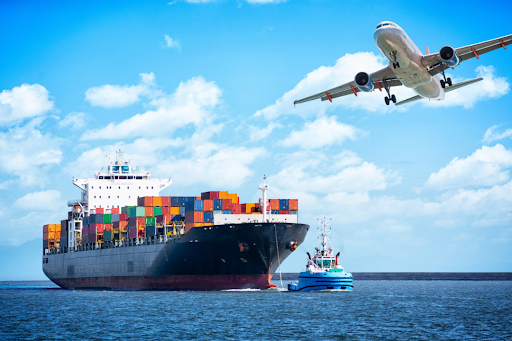Transportation and logistics are both necessary for the delivery of goods and services. Some people may find it hard to tell the difference between logistics and transportation because transportation is involved in so many different parts of logistics.
Both are two distinct concepts, despite their connection. Logistics involves planning, executing, and regulating the movement and storage of people or things. Transportation is the movement of items from one site to another.
This article explores the functions and duties of both. Following are some important things you will understand through this post:
- Cost-effectiveness
- Which concept is more comprehensive?
- Which concept is superior in terms of customer satisfaction?
- Challenges and opportunities in both.
Roles and Functions of Logistics and Transportation
Following are some of the main roles and functions of logistics in supply chain management
- Transport orders from ERP to the transportation management system (TMS).
- Stocktaking, inventory control, risk assessment, demand forecasting, and product replenishment.
- Manage warehouse storage, layout, space usage, material handling, loading, unloading, and inventory management.
- Prevent damage, improve aesthetics, and boost consumer value.
- Loading and unloading goods, securing them with straps, pallets, or crates.
- Sorting, combining, labeling, and distributing items.
- Collect, process, and communicate logistics data for order status, inventory, delivery schedules, and expenses.
- Transporting goods using various modes of transportation.
- Repair, replace, dispose of, or recycle broken or unwanted products.
- Reusing waste materials for new resources.
Key Things Transportation Services Do For Society:
Given below is the list. This will help you get a better idea of how transportation works:
- Communicate with supply chain stakeholders.
- Defense or humanitarian military transport.
- Transporting people and products using various modes of transportation.
- Offering products to customers distant from the production location.
- Helps employees and investors move to greater alternatives.
- Regions focus on comparative advantage goods and trade with others.
- Provides raw materials to huge industries.
- Move excess commodities to deficit regions to lower prices.
Cost Efficiency:
Efficient logistics and transportation reduce waste and optimize supply chain flow.
Logistics include streamlining operations, decreasing stock, and enhancing communication.
Using fuel-efficient cars and optimizing routes can maximize resource utilization in transportation.
Logistics and transportation affect a business’s competitiveness and profitability. Businesses can reduce transportation costs by consolidating shipments, choosing suitable transport modes, optimizing routes, implementing green practices, and outsourcing.
Comprehensive Concept:
Both involve planning, executing, and controlling the movement and storage of goods from origin to consumption.
Logistics company deals with production and distribution, including materials management and physical distribution.
Transportation services involve moving goods using different modes of transport. Efficient and effective product delivery are crucial concepts in the supply chain.
Customer Satisfaction:
Customer satisfaction guarantees fast, high-quality shipping. Logistics simplifies processes, cuts down on stock, and improves contact between stakeholders to improve supply chain flow and reduce waste.
Logistics and delivery are both important for customer satisfaction, but logistics covers a wider range of tasks.
Customer satisfaction goes up when the right things are delivered at the right time, place, and condition.
Customer satisfaction with logistics and transportation is affected by product quality, availability, variety, supply speed, reliability, freedom, cost, and communication.
Challenges and Opportunities:
The logistics and transportation sector is having trouble with lowering costs, speeding up supply times, and finding enough workers.
Digitalization, logistics teams working together, transportation that is good for the earth, and happy customers are all ways to grow. The only way for the industry to get past these problems is to standardize processes, save money, improve communication, and give people better service.
Technology options like automation and joint logistics could help reach these goals. Investing in digital solutions that improve awareness, tracking, communication, and automation could help the industry do better and be more competitive.
The Bottom Line
While both logistics and transportation entail the transfer of products and services, they do it in different ways and for distinct goals.
Transportation is at the center of the logistics company spectrum, which includes a wide range of operations.
Both are important for the supply chain, but logistics tasks may provide extra advantages.
The best way for logistic management and transportation service companies to prevent problems, in the long run, is to carefully organize their operations. If you need help with anything in the logistics industry check Lading Logistics.
FAQs
What is an example of transportation and logistics?
Transportation comprises several primary types. The list includes but is not limited to buses, trains, commercial air, ocean freight, personal vehicles, pedestrians, manages inventory, transportation, warehouse storage, order fulfillment, freight, reverse logistics, and returns.
What are the skills and qualifications required for logistics and transportation careers?
Local networks of firms offering a variety of logistics services, digitalization, collaborative logistics, sustainable transportation, increased customer satisfaction, and a thriving economy are all potential prospects in both sectors.
What is less than a truckload (LTL)?
LTL shipping, which stands for “less-than-truckload shipping,” means moving goods that don’t fill a whole truck. LTL shipping refers to the transportation of a smaller number of goods as opposed to full truckload shipping (FTL), which involves moving a lot of material.
What’s included in a bill of lading?
A bill of lading will often include the consignor and consignee of cargo, as well as the date, number, precise weight, value, and freight classification of the goods being transported.
What are some transportation issues you might find in warehousing?
Poorly planned arrivals and departures from the warehouse can cause costly bottlenecks. Trucks that wreck or break down must be towed to unload and deliver the load.
You may also like
-
Automatic Fruit Wine Bottling Line for Small Wineries: A Complete Guide
-
How Does Plywood HSN Code Decide the GST Rate for Traders and Manufacturers?
-
POS Terminal Type: Which Is Best for Your Business?
-
How to Choose Fixed and Portable Gas Monitors for Industrial Gas Detection?
-
Simplifying Trademark Registration in Hong Kong: What Businesses Need to Know

